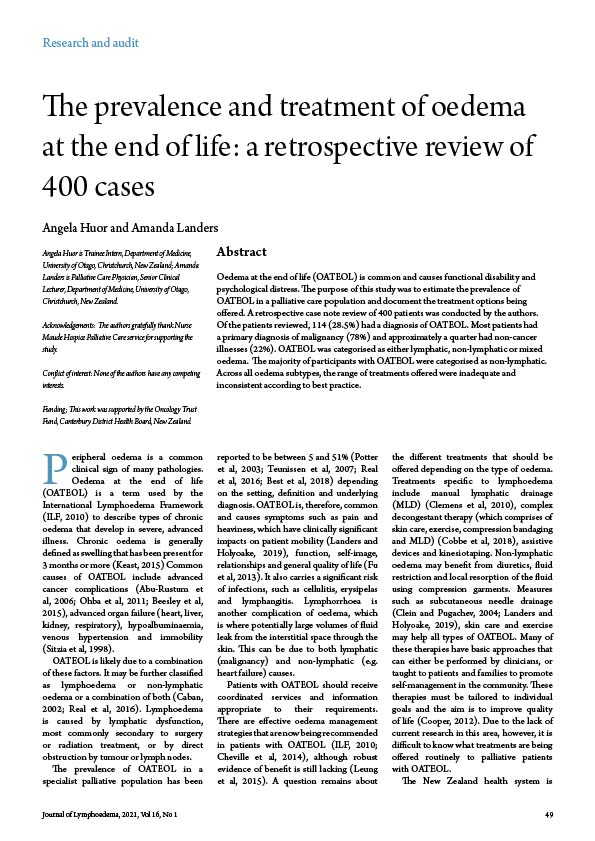Oedema at the end of life (OATEOL) is common and causes functional disability and psychological distress. The purpose of this study was to estimate the prevalence of OATEOL in a palliative care population and document the treatment options being offered. A retrospective case note review of 400 patients was conducted by the authors. Of the patients reviewed, 114 (28.5%) had a diagnosis of OATEOL. Most patients had a primary diagnosis of malignancy (78%) and approximately a quarter had non-cancer illnesses (22%). OATEOL was categorised as either lymphatic, non-lymphatic or mixed oedema. The majority of participants with OATEOL were categorised as non-lymphatic. Across all oedema subtypes, the range of treatments offered were inadequate and inconsistent according to best practice.





